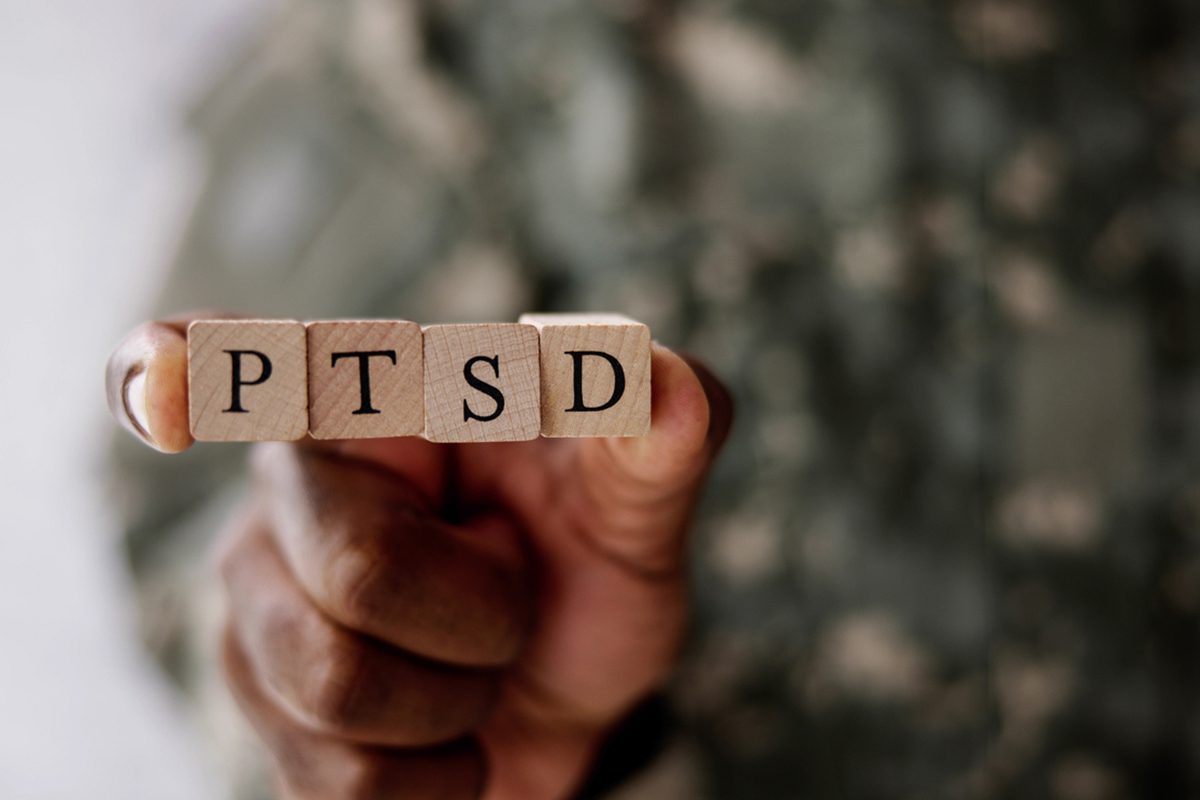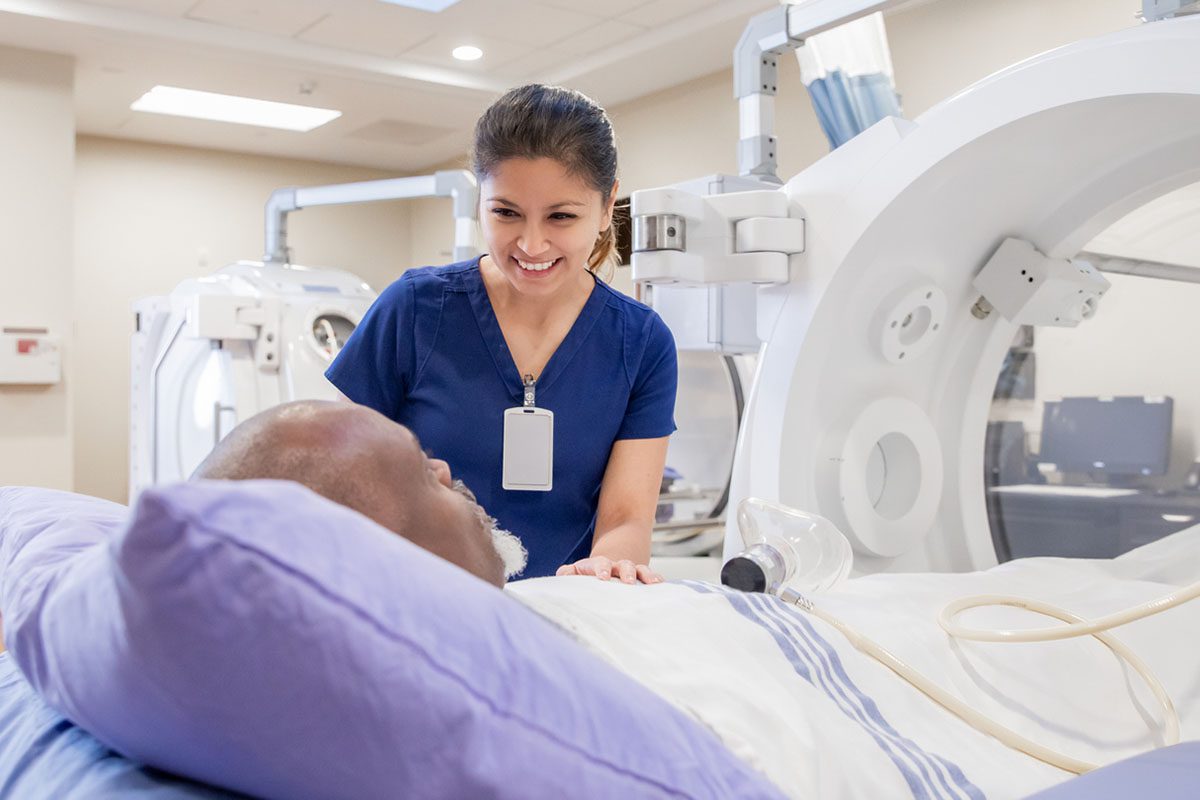ABSTRACT
Objective: The current study is an analysis of predictors of posttraumatic stress disorder (PTSD) treatment response in a clinical trial comparing (1) prolonged exposure plus placebo (PE + PLB), (2) PE + sertraline (PE + SERT), and (3) sertraline + enhanced medication management (SERT + EMM) with predictors including time since trauma (TST), self-report of pain, alcohol use, baseline symptoms, and demographics.
Methods: Participants (N = 196) were veterans with combat-related PTSD (DSM-IV-TR) of at least 3 months’ duration recruited between 2012 and 2016 from 4 sites in the 24-week PROlonGed ExpoSure and Sertraline (PROGrESS) clinical trial (assessments at weeks 0 [intake], 6, 12, 24, 36, and 52).
Results: Across treatment conditions, (1) longer TST was predictive of greater week 24 PTSD symptom improvement (β = 1.72, P = .01) after adjusting for baseline, (2) higher baseline pain severity was predictive of smaller symptom improvement (β = –2.96, P = .003), and (3) Hispanic patients showed greater improvement than non-Hispanic patients (β = 12.33, P = .03). No other baseline characteristics, including alcohol consumption, were significantly predictive of week 24 improvement. Comparison of TST by treatment condition revealed a significant relationship only in those randomized to the PE + SERT condition (β = 2.53, P = .03). Longitudinal analyses showed similar results.
Conclusions: The finding that longer TST shows larger symptom reductions is promising for PTSD patients who might not seek help for years following trauma. Higher baseline pain severity robustly predicted attenuated and slower response to all treatment conditions, suggesting a common neuropathologic substrate. Finally, in the current study, alcohol use did not impede the effectiveness of pharmacotherapy for PTSD.
Trial Registration: ClinicalTrials.gov identifier: NCT01524133
Members Only Content
This full article is available exclusively to Professional tier members. Subscribe now to unlock the HTML version and gain unlimited access to our entire library plus all PDFs. If you’re already a subscriber, please log in below to continue reading.
References (43)

- VA/DOD Clinical Practice Guideline for Management of Posttraumatic Stress Disorder and Acute Stress Disorder. US Department of Veterans Affairs. 2017. https://www.healthquality.va.gov/guidelines/MH/ptsd/VADoDPTSDCPGFinal.pdf
- Clinical Practice Guideline for the Treatment of PTSD. American Psychological Association. 2017. https://www.apa.org/ptsd-guideline/ptsd.pdf
- Foa EB, Rothbaum AO, Hembree EA, et al. In: Barlow DH, ed. Prolonged Exposure Therapy for PTSD: Emotional Processing of Traumatic Experiences. 2nd ed. New York, NY: Oxford University Press; 2019.
- Lee DJ, Schnitzlein CW, Wolf JP, et al. Psychotherapy versus pharmacotherapy for PTSD: systemic review and meta-analyses to determine first-line treatments. Depress Anxiety. 2016;33:792–806. PubMed CrossRef
- Rauch SAM, Kim HM, Powell C, et al. Efficacy of prolonged exposure therapy, sertraline hydrochloride, and their combination among combat veterans with posttraumatic stress disorder: a randomized clinical trial. JAMA Psychiatry. 2019;76(2):117–126. PubMed CrossRef
- McFarlane AC, Lawrence-Wood E, Van Hooff M, et al. The need to take a staging approach to the biological mechanisms of PTSD and its treatment. Curr Psychiatry Rep. 2017;19(2):10. PubMed CrossRef
- Kessler RC, Sonnega A, Bromet E, et al. Posttraumatic stress disorder in the National Comorbidity Survey. Arch Gen Psychiatry. 1995;52(12):1048–1060. PubMed CrossRef
- Armenta RF, Rush T, LeardMann CA, et al; Millennium Cohort Study team. Factors associated with persistent posttraumatic stress disorder among US military service members and veterans. BMC Psychiatry. 2018;18(1):48. PubMed CrossRef
- Chard KM, Schumm JA, Owens GP, et al. A comparison of OEF and OIF veterans and Vietnam veterans receiving cognitive processing therapy. J Trauma Stress. 2010;23(1):25–32. PubMed CrossRef
- Galovski TE, Blain LM, Mott JM, et al. Manualized therapy for PTSD: flexing the structure of cognitive processing therapy. J Consult Clin Psychol. 2012;80(6):968–981. PubMed CrossRef
- Powers MB, Halpern JM, Ferenschak MP, et al. A meta-analytic review of prolonged exposure for posttraumatic stress disorder. Clin Psychol Rev. 2010;30(6):635–641. PubMed CrossRef
- Richardson JD, Elhai JD, Sarreen J. Predictors of treatment response in Canadian combat and peacekeeping veterans with military-related posttraumatic stress disorder. J Nerv Ment Dis. 2011;199(9):639–645. PubMed CrossRef
- Tucker P, Zaninelli R, Yehuda R, et al. Paroxetine in the treatment of chronic posttraumatic stress disorder: results of a placebo-controlled, flexible-dosage trial. J Clin Psychiatry. 2001;62(11):860–868. PubMed CrossRef
- Friedman MJ, Marmar CR, Baker DG, et al. Randomized, double-blind comparison of sertraline and placebo for posttraumatic stress disorder in a Department of Veterans Affairs setting. J Clin Psychiatry. 2007;68(5):711–720. PubMed CrossRef
- Davidson J, Pearlstein T, Londborg P, et al. Efficacy of sertraline in preventing relapse of posttraumatic stress disorder: results of a 28-week double-blind, placebo-controlled study. Am J Psychiatry. 2001;158(12):1974–1981. PubMed CrossRef
- Sripada RK, Blow FC, Rauch SAM, et al. Examining the nonresponse phenomenon: Factors associated with treatment response in a national sample of veterans undergoing residential PTSD treatment. J Anxiety Disord. 2019;63:18–25. PubMed CrossRef
- Bartoszek G, Hannan SM, Kamm J, et al. Trauma-related pain, reexperiencing symptoms, and treatment of posttraumatic stress disorder: a longitudinal study of veterans. J Trauma Stress. 2017;30(3):288–295. PubMed CrossRef
- Nordin L, Perrin S. Pain and posttraumatic stress disorder in refugees who survived torture: the role of pain catastrophizing and trauma-related beliefs. Eur J Pain. 2019;23(8):1497–1506. PubMed CrossRef
- Back SE, Brady KT, Sonne SC, et al. Symptom improvement in co-occurring PTSD and alcohol dependence. J Nerv Ment Dis. 2006;194(9):690–696. PubMed CrossRef
- Bedard-Gilligan M, Garcia N, Zoellner LA, et al. Alcohol, cannabis, and other drug use: engagement and outcome in PTSD treatment. Psychol Addict Behav. 2018;32(3):277–288. PubMed CrossRef
- van Minnen A, Harned MS, Zoellner L, et al. Examining potential contraindications for prolonged exposure therapy for PTSD. Eur J Psychotraumatol. 2012;3(1):3. PubMed CrossRef
- van Minnen A, Arntz A, Keijsers GP. Prolonged exposure in patients with chronic PTSD: predictors of treatment outcome and dropout. Behav Res Ther. 2002;40(4):439–457. PubMed CrossRef
- Belleau EL, Chin EG, Wanklyn SG, et al. Pre-treatment predictors of dropout from prolonged exposure therapy in patients with chronic posttraumatic stress disorder and comorbid substance use disorders. Behav Res Ther. 2017;91:43–50. PubMed CrossRef
- Phelps AJ, Steele Z, Cowlishaw S, et al. Treatment outcomes for military veterans with posttraumatic stress disorder: response trajectories by symptom cluster. J Trauma Stress. 2018;31(3):401–409. PubMed CrossRef
- Haagen JFG, Ter Heide FJJ, Mooren TM, et al. Predicting post-traumatic stress disorder treatment response in refugees: multilevel analysis. Br J Clin Psychol. 2017;56(1):69–83. PubMed CrossRef
- Martenyi F, Brown EB, Zhang H, et al. Fluoxetine versus placebo in posttraumatic stress disorder. J Clin Psychiatry. 2002;63(3):199–206. PubMed CrossRef
- Eftekhari A, Crowley JJ, Mackintosh M-A, et al. Predicting treatment dropout among veterans receiving prolonged exposure therapy. Psychol Trauma. 2020;12(4):405–412. PubMed CrossRef
- McClendon J, Dean KE, Galovski T. Addressing diversity in PTSD treatment: disparities in treatment engagement and outcome among patients of color. Curr Treat Options Psychiatry. 2020;7(3):275–290. CrossRef
- Jaycox LH, Foa EB, Morral AR. Influence of emotional engagement and habituation on exposure therapy for PTSD. J Consult Clin Psychol. 1998;66(1):185–192. PubMed CrossRef
- Marks I, Lovell K, Noshirvani H, et al. Treatment of posttraumatic stress disorder by exposure and/or cognitive restructuring: a controlled study. Arch Gen Psychiatry. 1998;55(4):317–325. PubMed CrossRef
- Rauch SAM, Simon NM, Kim HM, et al. Integrating biological treatment mechanisms into randomized clinical trials: design of PROGrESS (PROlonGed ExpoSure and Sertraline Trial). Contemp Clin Trials. 2018;64:128–138. PubMed CrossRef
- American Psychiatric Association. Diagnostic and Statistical Manual for Mental Disorders. Fourth Edition, Text Revision. Washington, DC: American Psychiatric Association; 2000.
- Blake DD, Weathers FW, Nagy LM, et al. The development of a clinician-administered PTSD scale. J Trauma Stress. 1995;8(1):75–90. PubMed CrossRef
- Wilkins KC, Lang AJ, Norman SB. Synthesis of the psychometric properties of the PTSD checklist (PCL) military, civilian, and specific versions. Depress Anxiety. 2011;28(7):596–606. PubMed CrossRef
- Cleeland CS, Ryan KM. Pain assessment: global use of the Brief Pain Inventory. Ann Acad Med Singapore. 1994;23(2):129–138. PubMed
- de Vroege L, Hoedeman R, Nuyen J, et al. Validation of the PHQ-15 for somatoform disorder in the occupational health care setting. J Occup Rehabil. 2012;22(1):51–58. PubMed CrossRef
- Kubany ES, Haynes SN, Abueg FR, et al. Development and validation of the Trauma-Related Guilt Inventory (TRGI). Psychol Assess. 1996;8(4):428–444. CrossRef
- Rauch SAM, King A, Kim HM, et al. Cortisol awakening response in PTSD treatment: predictor or mechanism of change. Psychoneuroendocrinology. 2020;118:104714. PubMed CrossRef
- Joshi SA, Duval ER, Sheynin J, et al. Neural correlates of emotional reactivity and regulation associated with treatment response in a randomized clinical trial for posttraumatic stress disorder. Psychiatry Res Neuroimaging. 2020;299:111062. PubMed CrossRef
- Duval ER, Sheynin J, King AP, et al. Neural function during emotion processing and modulation associated with treatment response in a randomized clinical trial for posttraumatic stress disorder. Depress Anxiety. 2020;37(7):670–681. PubMed CrossRef
- Sheynin J, Duval ER, King AP, et al. Associations between resting-state functional connectivity and treatment response in a randomized clinical trial for posttraumatic stress disorder. Depress Anxiety. 2020;37(10):1037–1046. PubMed CrossRef
- Joksimovic SL, Covey DF, Jevtovic-Todorovic V, et al. Neurosteroids in pain management: a new perspective on an old player. Front Pharmacol. 2018;9:1127. PubMed CrossRef
- Benuto LT, Bennett NM, Casas JB. Minority participation in randomized controlled trials for prolonged exposure therapy: a systematic review of the literature. J Trauma Stress. 2020;33(4):420–431. PubMed CrossRef





